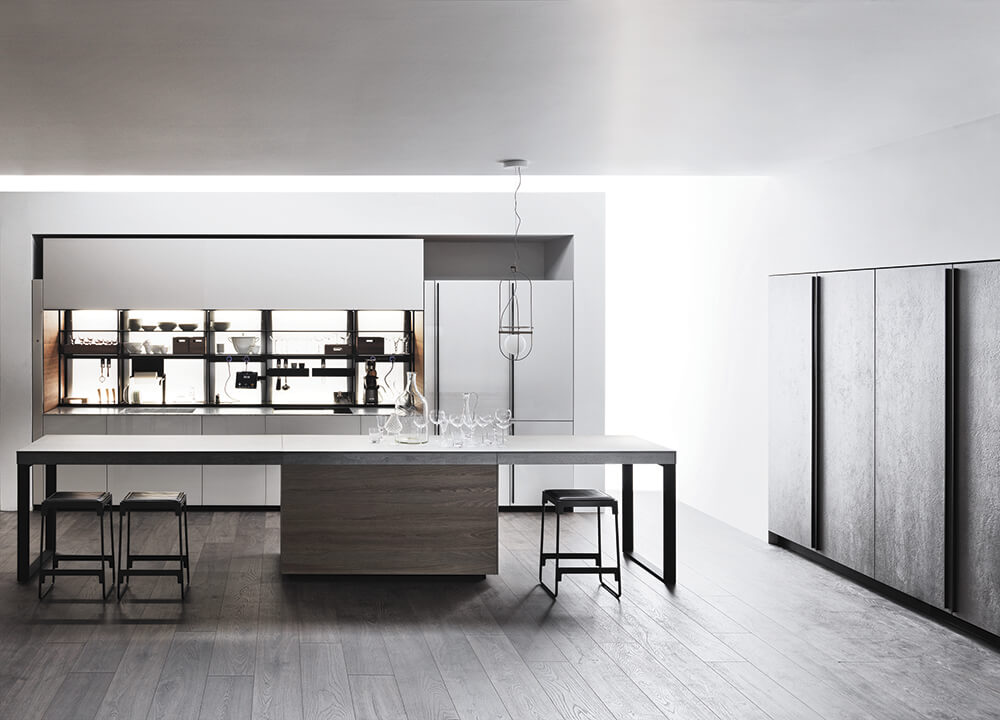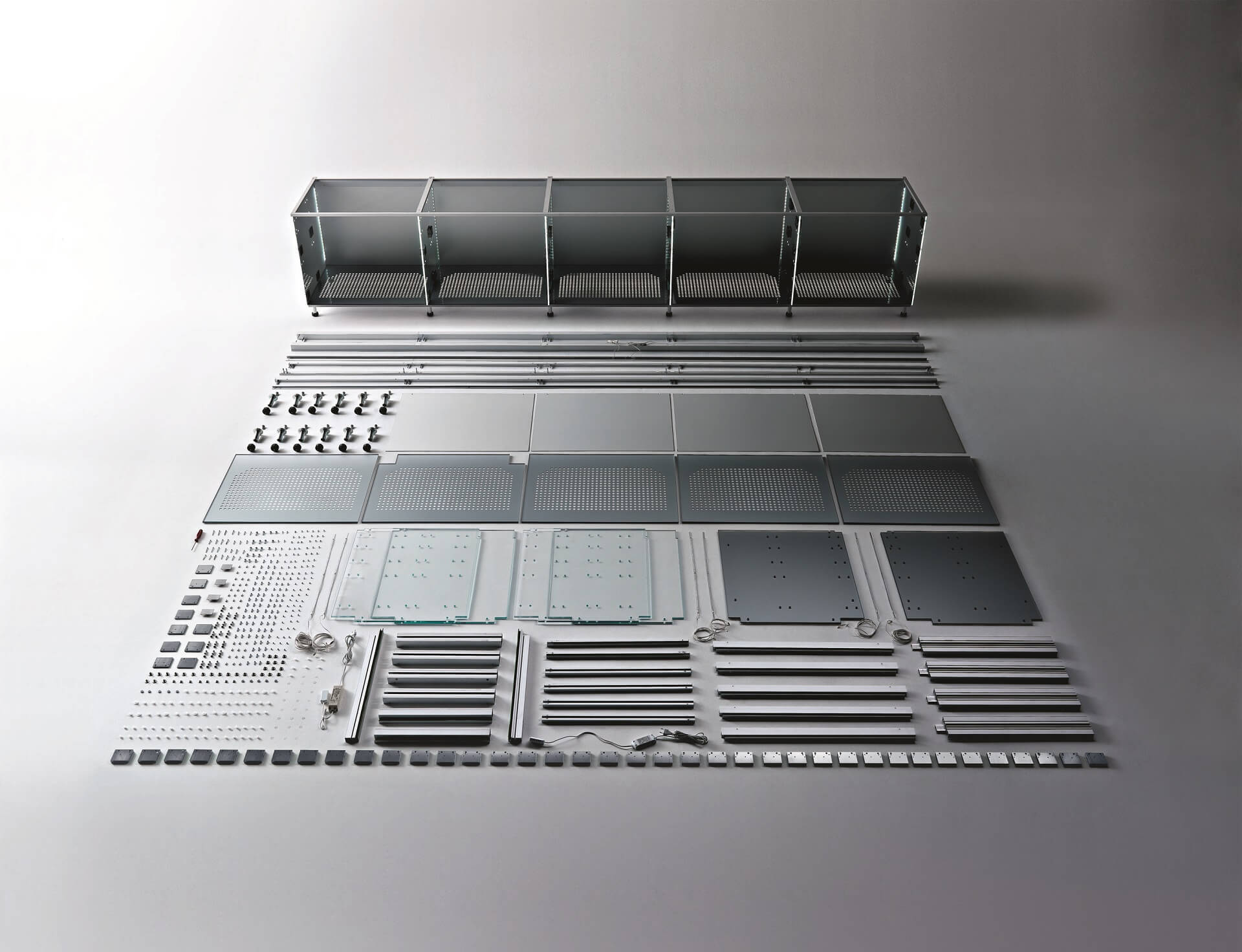On the occasion of Milan Design Week 2022, Valcucine presents the project “Sustainability beyond Space and Time”: a series of appointments aimed at affirming the brand‘s 40-year commitment to sustainable production and at celebrating the new LEED v4.1 mapping, in collaboration with all the players involved in a sustainable design process.
On this occasion, Valcucine’s new products will be presented, such as the new versions of Artematica and Riciclantica, shelving with integrated special elements, the repositioning of materials and finishes in the various products and a program of finishes for architecture.
Paraphrasing the famous quote by Ernesto Nathan Rogers in “From the City to the Spoon,” the company involved several architectural firms in a virtual journey, curated by Archivibe in collaboration with Fuorisalone, through some LEED-certified buildings designed by well-known architectural firms such as ARUP, Barreca & La Varra, GBPA Architects, Mario Cucinella Architects, One Works, Park Associati, Progetto CMR, Scandurra Studio Architettura, Skidmore Owings Merril and Tectoo
The exhibition LE3DERS will be presented at their showroom in Milano Brera, curated by Archivibe, with the exhibition of architectural models of well-known international architectural firms such as 3XN, Craft, GCA, HENN, HPP, Rafael de la Hoz and Schmidt Hammer Lassen, in 3D version and displayed through an Augmented Reality experience to be experienced through Instagram filters.
In addition, in collaboration with Greenmap – Habitech’s program for the industry, a leading national hub for sustainable building, renewable energy and innovation – the company has renewed the mapping of its products with the LEED v4.1 protocol, which certifies sustainable architecture.
What is LEED®
LEED® Leadership in Energy and Environmental Design is a building certification system that is applied in more than 150 countries around the world. It represents the most widespread verification system for green architecture in the world today. More than 170,000 square meters are certified every day worldwide. In 2021 alone, more than 1,000 LEED-certified projects for more than 14 million square meters were built in China, followed by Canada (250 buildings), India (146), Korea (42), Spain (100), United Arab Emirates (73), Brazil (89), Italy (106), Mexico (47) and Taiwan (31).
The LEED system can be applied to any building and interior space and provides a grid for the design, construction, and operation of green and healthy, highly efficient, and cost-effective facilities. Certification is a symbol of excellence and indicates, with third-party validation recognized by the international market, that a building has achieved high levels of energy-environmental sustainability, protecting people’s quality of life and health.
Milan is one of the top five cities in Europe, along with Madrid, Stockholm, Frankfurt, and Istanbul, for the number of sustainable buildings designed, built and managed according to the international LEED standard.
Valcucine’s Criteria
Therefore, the brand’s products and product components that meet the LEED performance criteria contribute to the credits required for LEED certification, fulfilling through its contribution matrix up to 12 credits in 5 different credit categories: Water Efficiency, Energy, and Atmosphere, Materials and Resources, Indoor Environmental Quality, Innovation.
Excellent examples of the mapping work are the collection and provision of specifiers of information about the energy consumption of the appliances that the company offers (Energy and Atmosphere), the use of systems to measure water consumption (Water Efficiency), the collection of all environmental declarations of product components and the extension to all wood particleboard and wood fiber panels of the FSC certification (Material and resources), the production of kitchens such as Artematica Vitrum with glass doors and Invitrum bases, 100% recyclable glass and aluminum (Indoor Environmental Quality), or the creation of inclusive design systems to improve and facilitate interaction with the “cooking machine” such as V-Motion (Innovation).
Another stated objective of this mapping, in addition to accountability, is the sharing of processes within the company as well as the involvement and empowerment of people, in order to consider this competence as the company’s “core”. The LEED contribution matrix also becomes a sort of “rosetta stone”: a useful tool for sharing the values of sustainability within the company and also for communicating externally with architects, sharing product specifications and technicalities.




